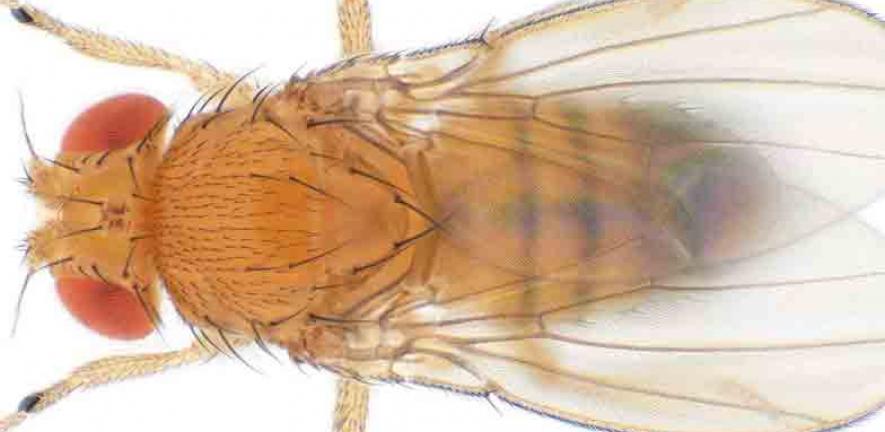
A how-to manual for fruit fly research has been created.
A how-to manual for fruit fly research has been created.
Until now a comprehensive teaching programme to guide students through the often daunting first few steps has been surprisingly absent
John Roote
The first ever basic training package to teach students and scientists how to best use the fruit fly, Drosophila, for research has been published. It’s hoped it will encourage more researchers working on a range of conditions from cancer to Alzheimer’s disease to use the humble fly.
The unique scheme has been put together by Dr Andreas Prokop from the Faculty of Life Sciences at the University of Manchester and John Roote from the Department of Genetics at the University of Cambridge.
John Roote said, “In 1910 Thomas Hunt Morgan isolated the first Drosophila sex-linked mutation, white. Since then many thousands of research workers have realised the potential of the humble fruit fly.
“The powerful research tools that we have today combined with a century of background knowledge, the vast collections of stocks that are available to everyone and the fortuitous ‘pre-adaptation’ of the fly for life in a laboratory ensure that Drosophila melanogaster maintains its position as the pre-eminent model organism for research in genetics. However, until now a comprehensive teaching programme to guide students through the often daunting first few steps has been surprisingly absent.”
Dr Prokop said: “People don’t realise just how useful the tiny fruit fly can be when it comes to research. Fellow scientists are often not aware of their genetic value for research. For example, about 75% of known human disease genes have a recognisable match in the genome of fruit flies which means they can be used to study the fundamental biology behind complex conditions such as epilepsy or neurodegeneration.”
Fruit flies have been used for scientific research for more than a hundred years. They have allowed scientific breakthroughs in genetics, body structure and function. The first jet lag gene and the first learning gene were identified in flies as well as breakthroughs in neuroscience, such as the discovery of the first channel proteins.
Dr Prokop says: “Flies need very little space so are ideal for breeding. They develop in just two weeks and it is a simple process to follow a genetic mutation through the generations by analysing the patterns on their bristles, wings or eyes which provide easy visible markers.”
Despite the flies’ contribution to scientific research through the ages, including four Nobel prizes, there is a concern that fewer scientists are aware of their potential. Part of the reason for this has been a trend away from basic genetics training in schools and universities which makes it harder for newcomers to the fly.
Together with John Roote, the manager of the main Cambridge fly facility, Dr Prokop has developed a four part training package for all scientists. It includes a self-study introductory manual, a short practical session on gender and marker selection, an interactive Powerpoint presentation and finally an independent training exercise in mating scheme design.
Dr Prokop says it’s a well rounded package: “We wanted to make sure that key aspects of fly research become apparent to the newcomer right away, such as a basic appreciation of why Drosophila is used for research, the nature of the fly stocks we use, an understanding of classical genetic rules and the knowledge of the nature and use of classical genetic markers but also the use of modern transgenic technologies.”
He continues: “We’ve had a really good response from people who’ve tested the training package and we’re confident this will encourage more scientists to consider using the fruit fly in the future.”
To access the training package, you can go to the following link: http://figshare.com/articles/How_to_design_a_genetic_mating_scheme_a_bas...
A paper outlining the package has been published in the February edition of the journal G3.
Story adapted from University of Manchester press release.
This work is licensed under a Creative Commons Licence. If you use this content on your site please link back to this page.

